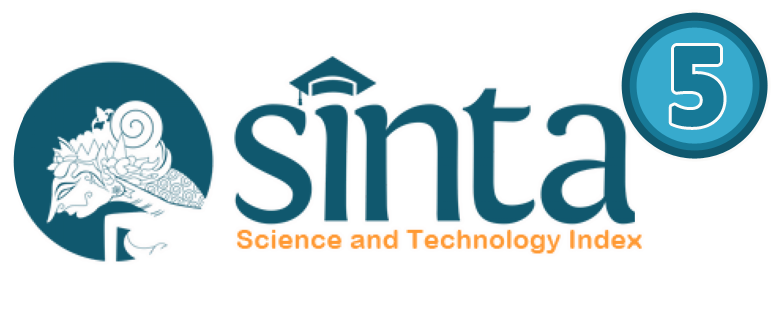PENGARUH DIGITALISASI SURAT PERINTAH KERJA TERHADAP KINERJA KARYAWAN DEPARTEMEN PRODUCT DEVELOPMENT DI PT CENTRAL MEGA KENCANA
DOI:
https://doi.org/10.31949/infotech.v9i1.5030Abstract
Penelitian ini bertujuan untuk menganalisa pengaruh Internet of Things, Big Data, dan Cyber Physical System terhadap kinerja Product Development selama pandemi di PT Central Mega Kencana untuk memberikan rekomendasi langkah yang dapat diambil untuk meningkatkan kinerja Product Development PT Central Mega Kencana. Penelitian dilakukan menggunakan metode kuantitatif deskriptif dengan melakukan survei kepada karyawan pada departemen Product Development di PT Central Mega Kencana sebanyak 218 orang. Metode analisis menggunakan metode SmartPLS 3.2.7. Hasil penelitian menunjukan bahwa Internet of Things, Big Data, dan Cyber Physical System memiliki pengaruh positif dan signifikan terhadap kinerja departemen Product Development PT Central Mega Kencana. Digitalisasi memiliki potensi untuk meningkatkan efisiensi, meningkatkan kualitas hidup, dan memungkinkan pengelolaan yang lebih baik.
Keywords:
Digitalization, Internet of Things, Big Data, Cyber-Physical Systems, Work orderDownloads
References
Creswell, John W., and J. David Creswell. 2017. Research Design: Qualitative, Quantitative, and Mixed Methods Approaches. Sage publications.
Davenport, T. H., & Dyché, J. 2013. “Big Data in Big Companies.” International Institute for Analytics 3(1):1–31.
Ghozali, Imam, and H. Latan. 2015. “Partial Least Squares Concepts, Techniques and Applications Using the Smartpls 3.0 Program for Empirical Research.” Semarang: Badan Penerbit UNDIP.
Gobble, Maryanne M. 2018. “Digital Strategy and Digital Transformation Digital Strategy and Digital Transformation.” Research-Technology Management 0(0):0–1. doi: 10.1080/08956308.2018.1495969.
Hair, Joseph F., Jeffrey J. Risher, Marko Sarstedt, and Christian M. Ringle. 2019. “When to Use and How to Report the Results of PLS-SEM.” European Business Review 31(1):2–24. doi: 10.1108/EBR-11-2018-0203.
Henseler, Jörg, Christian M. Ringle, and Marko Sarstedt. 2015. “A New Criterion for Assessing Discriminant Validity in Variance-Based Structural Equation Modeling.” Journal of the Academy of Marketing Science 43(1):115–35. doi: 10.1007/s11747-014-0403-8.
Kao, Hung An, Wenjing Jin, David Siegel, and Jay Lee. 2015. “A Cyber Physical Interface for Automation Systems-Methodology and Examples.” Machines 3(2):93–106. doi: 10.3390/machines3020093.
Liere-Netheler, Kirsten, Sven Packmohr, and Kristin Vogelsang. 2018. “Drivers of Digital Transformation in Manufacturing.” Proceedings of the Annual Hawaii International Conference on System Sciences 2018-Janua:3926–35. doi: 10.24251/hicss.2018.493.
Madakam, Somayya, Vihar Lake, Vihar Lake, and Vihar Lake. 2015. “Internet of Things (IoT): A Literature Review.” Journal of Computer and Communications 3(05):164.
O’Leary, Daniel E. 2013. “Artificial Intelligence and Big Data.” IEEE Intelligent Systems 28(2):96–99.
Piccinini, Everlin, Andre Hanelt, Robert W. Gregory, and Lutz M. Kolbe. 2015. “Transforming Industrial Business: The Impact of Digital Transformation on Automotive Organizations.” 2015 International Conference on Information Systems: Exploring the Information Frontier, ICIS 2015 1–20.
Pivoto, Diego G. S., Luiz F. F. de Almeida, Rodrigo da Rosa Righi, Joel J. P. C. Rodrigues, Alexandre Baratella Lugli, and Antonio M. Alberti. 2021. “Cyber-Physical Systems Architectures for Industrial Internet of Things Applications in Industry 4.0: A Literature Review.” Journal of Manufacturing Systems 58(December):176–92. doi: 10.1016/j.jmsy.2020.11.017.
Ritz, J., & Knaack, Z. 2017. “Internet of Things.” Technology and Engineering Teacher 76(6):1–15.
Umarani, G., and K. Sharmila. 2018. “IoT : The Next Evolution of Internet.” 4(7):11–15.
Wall, Toby D. 2004. “On the Validity of Subjective Measures of Company Performance.” Personnel Psychology 57(March):95–118. doi: 10.1111/j.1744-6570.2004.tb02485.x.
Published
How to Cite
Issue
Section
License
Copyright (c) 2023 INFOTECH journal

This work is licensed under a Creative Commons Attribution-NonCommercial-ShareAlike 4.0 International License.









